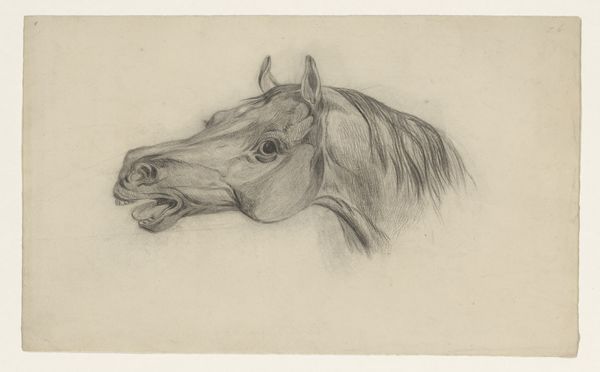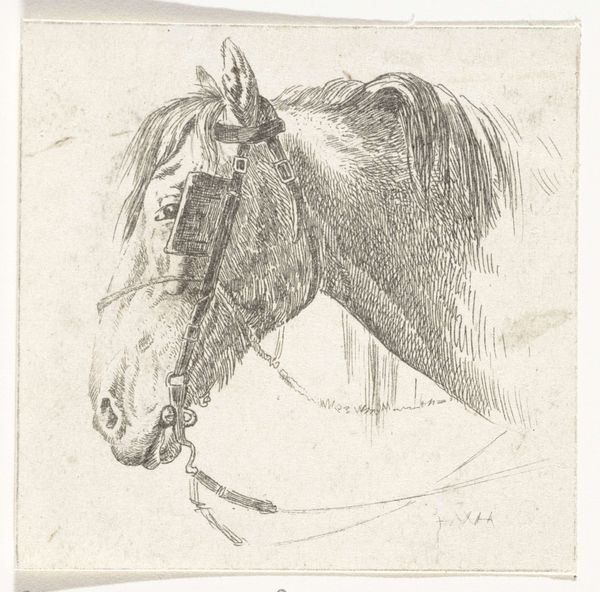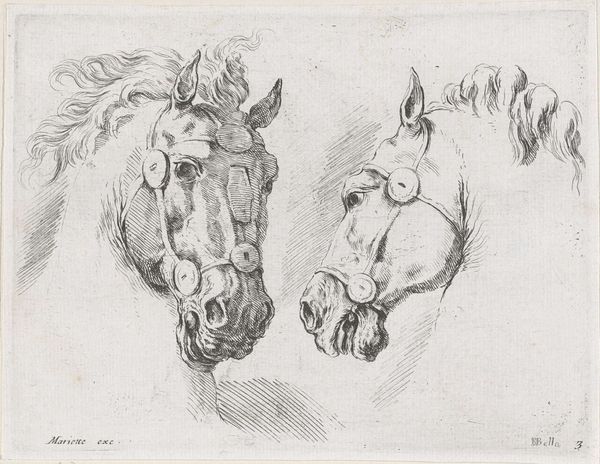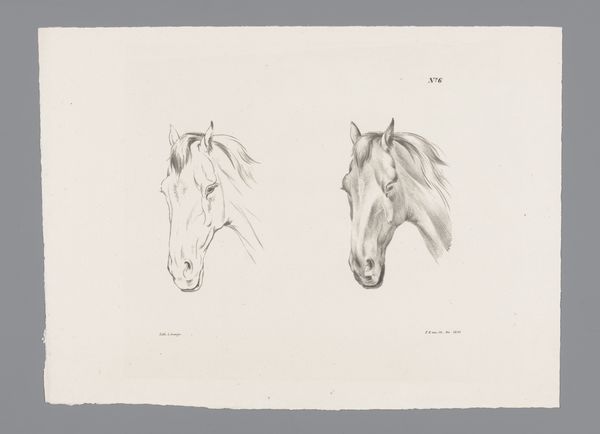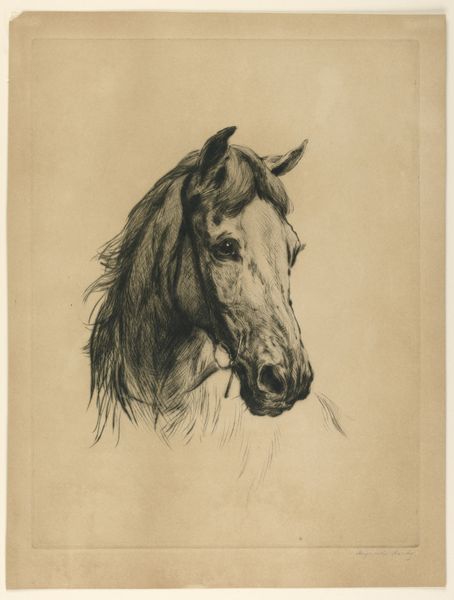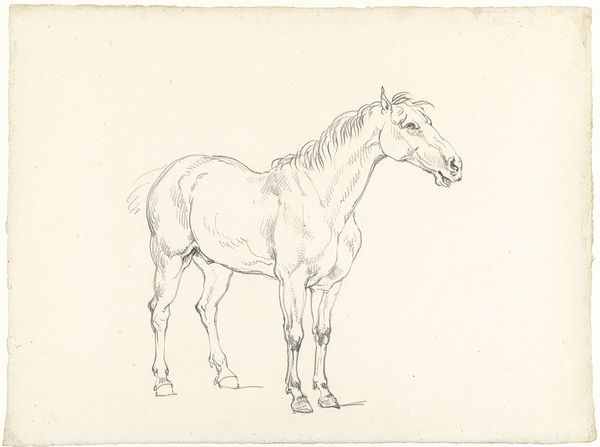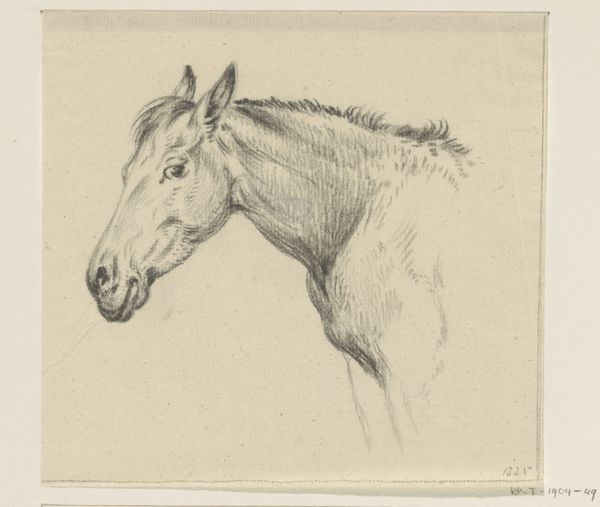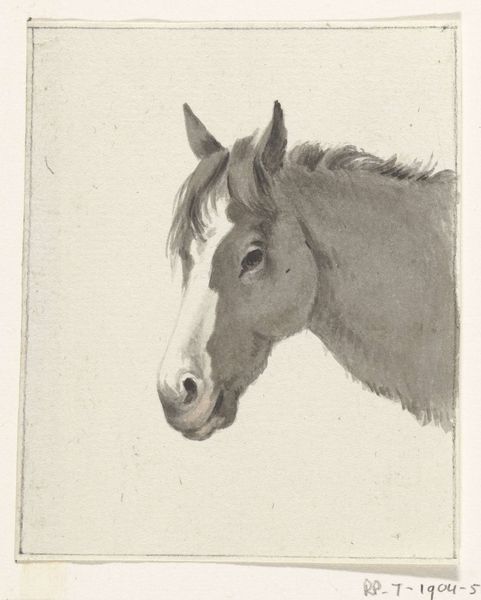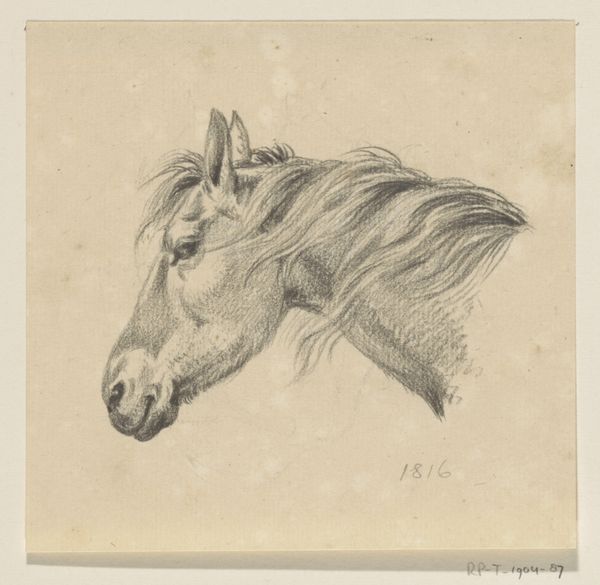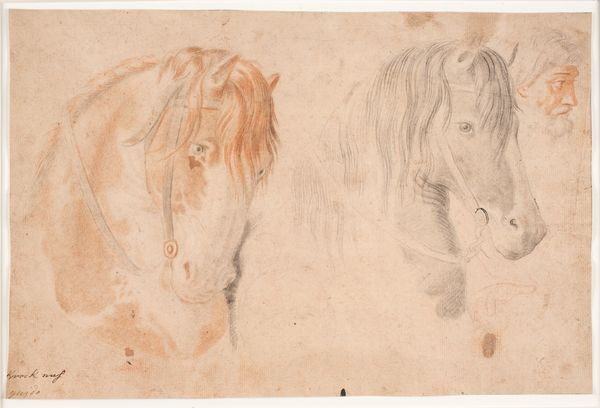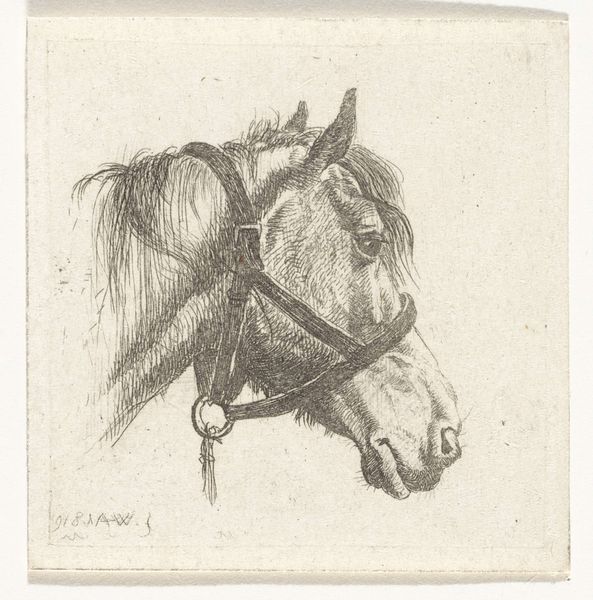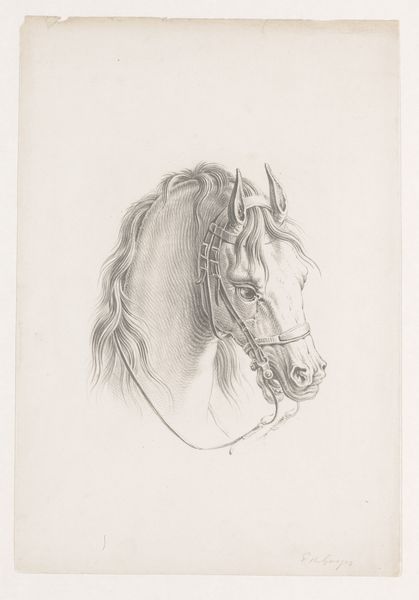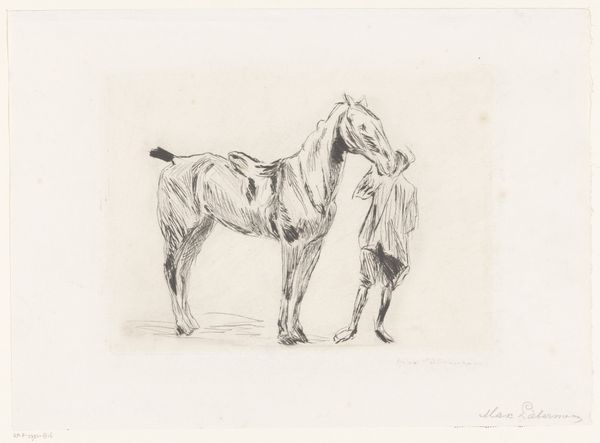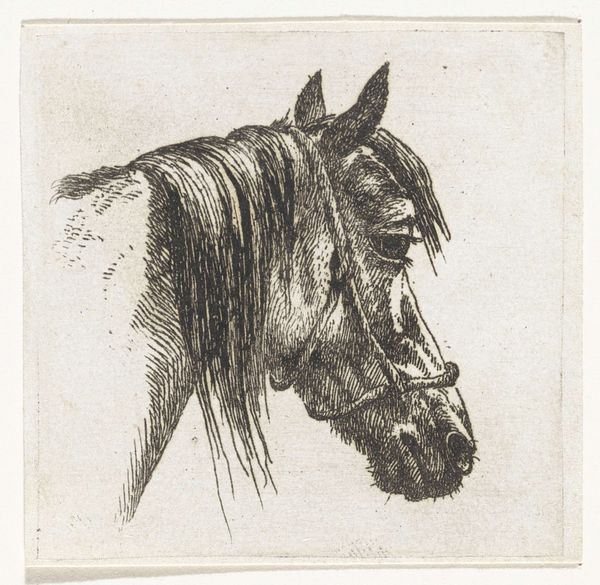
drawing, pencil, graphite
#
portrait
#
drawing
#
animal
#
pencil sketch
#
pencil drawing
#
pencil
#
horse
#
graphite
#
genre-painting
#
realism
Dimensions: height 110 mm, width 137 mm
Copyright: Rijks Museum: Open Domain
Curator: Here we have Jacobus Cornelis Gaal's "Two Horses' Heads," created around 1851. It's a detailed pencil and graphite drawing, a study in animal portraiture now residing in the Rijksmuseum. Editor: They’re beautiful. There’s something almost melancholic about their eyes. A somber elegance. Curator: Considering the context, horses were deeply embedded in 19th-century Dutch society, essential for agriculture, transport, and even military power. Gaal was actively participating in artistic life: he was member of several artist societies and regularly part of exhibitions in Amsterdam and The Hague, the artistic and political canters. He painted horses quite often. These detailed depictions were quite popular. Editor: It’s interesting how Gaal captures the texture of their coats. The clear, fine pencil work suggests it was made quite meticulously, not just sketching, reflecting a slow, intentional study of his subject. The subtle shifts in value must have required quite a bit of material skill to achieve. The means of their breeding would determine not only physical appearance, but the jobs they'd fulfill in Dutch society. I wonder if there were local types of horses at the time... Curator: The market for genre paintings that celebrated the Dutch countryside increased steadily in that period. Rural life became idealized in painting. Horses of course had a clear function and often a high economic value. So indeed, here, it is interesting how class relations extend even to the animal kingdom. I think those images have an incredible ideological influence even until today. Editor: Yes, there’s a tension there. He immortalizes the labor that’s been put to use, but it's divorced from its own conditions. Look at the material choices, that very restrained use of shading – a real mastery of tonal variation, very delicate graphite handling here. A drawing instead of a painting would serve very practical, pedagogical reasons, which again makes the process very accessible. Curator: He's capturing a kind of working-class aristocracy, elevating the status of farm animals... In art, the portrayal of animals reflects social values, too, and Gaal very explicitly contributes to constructing a national identity by using specifically 'Dutch' scenery and people. Editor: Yes, precisely. Gaal isn’t just portraying horses, he is representing labor relations as idealized subject. The making and looking at such image is also labor: someone buying the product from the work of art... It’s all embedded in this network of artistic patronage and consumption. Well, this was very insightful! Curator: Agreed. It makes one think about our own preconceived notions of this animal that the modern global equestrian industry keeps recreating everyday.
Comments
No comments
Be the first to comment and join the conversation on the ultimate creative platform.
